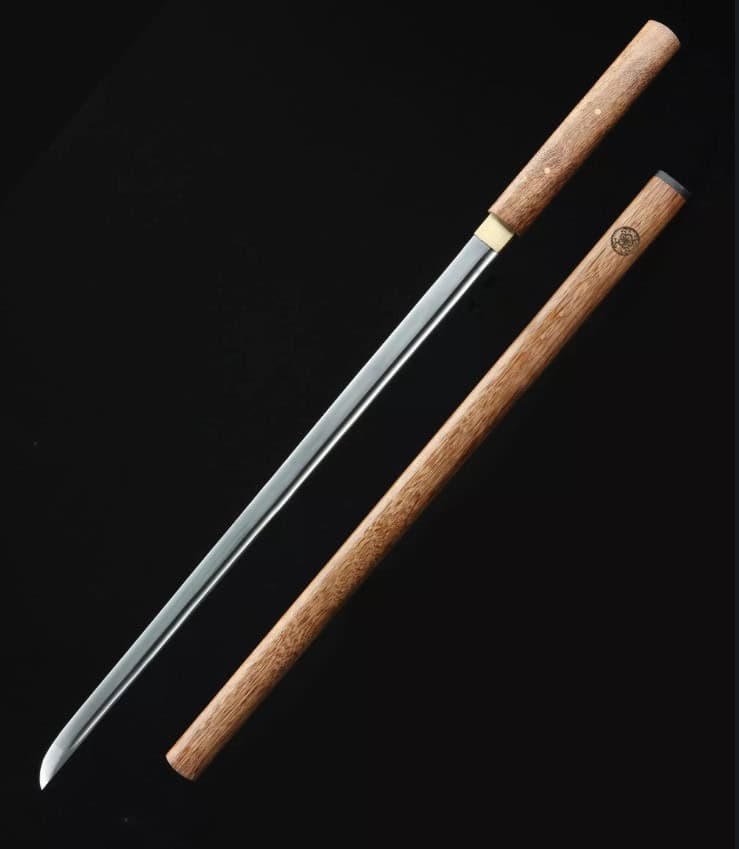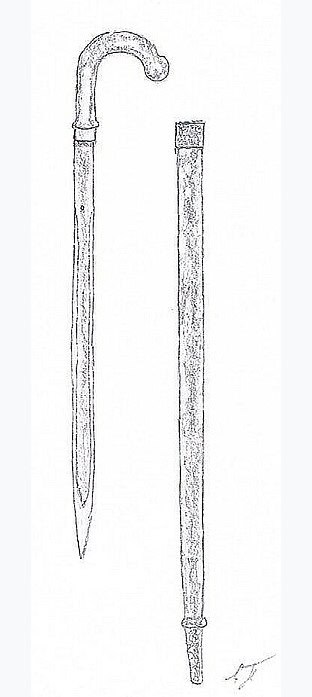Variations and Types of Sword Canes
Sword canes, or cane-swords, have a rich and varied history that spans multiple cultures and centuries—originally developed as a discreet means of self-defense for the wealthy and noble, these unique weapons combined practicality with elegance. This article explores the different variations of sword canes, from the Japanese shikomizue to the Indian gupti, Roman dolon, and other regional adaptations, delving into their historical backgrounds, construction, and cultural significance.
Check out the best places to buy a sword cane!
Japanese Shikomizue
The shikomizue is a distinctive type of sword cane that originated in feudal Japan. It was notably used by samurai and covert operatives who required a discreet yet effective weapon. Unlike other sword canes, the shikomizue features a single-edged blade that closely resembles a katana.
This blade is typically made of high-quality steel, ensuring both sharpness and durability. The cane itself is often crafted from bamboo or wood, materials that provide both strength and a lightweight feel. One of the shikomizue’s unique characteristics is its absence of a guard, which allows for a seamless and unobtrusive appearance, making it an ideal tool for covert operations.
The usage of the shikomizue involves techniques that are adapted from traditional Japanese swordsmanship, specifically kenjutsu and iaido. These martial arts emphasize the importance of quick, precise movements.
The shikomizue is drawn and wielded with the same fluid motions as a katana, enabling practitioners to deliver rapid and accurate strikes. This makes the shikomizue not only a practical weapon but also an elegant one, requiring skill and precision to use effectively.
Culturally, the shikomizue holds a significant place in Japanese folklore and history. It is often depicted in media and literature as the weapon of choice for mysterious and skilled warriors. This imagery is reinforced by its association with stealth and efficiency, qualities that were highly valued by the samurai and ninja. The shikomizue’s sleek design and practical functionality have cemented its status as an iconic symbol in Japanese martial arts and storytelling.
Indian Gupti
The gupti, a distinctive sword cane from India, holds a significant place in the country’s history. Particularly favored by Indian nobility and warriors, the gupti was not just a weapon but also a symbol of status and craftsmanship. This sword cane features a double-edged blade concealed within a cane, typically made from durable hardwood. The blade itself is crafted from steel, ensuring both sharpness and resilience.
One of the most striking aspects of the gupti is its handle, which is often ornately designed. These designs showcase the intricate artistry and craftsmanship of the time, with handles sometimes featuring elaborate carvings and embellishments that reflect the cultural heritage of India.
In combat situations, the gupti was drawn swiftly to catch opponents by surprise. The element of surprise was crucial, and the quick, fluid motion required to reveal the blade made it an effective tool for self-defense.
Techniques from Indian martial arts, such as Kalaripayattu, were adapted for use with the gupti. These techniques emphasized agility, precision, and speed, allowing the wielder to effectively defend themselves or incapacitate their opponent.
Historically, the gupti was more than just a weapon; it was a symbol of power and martial skill. It played a significant role in self-defense and warfare, particularly among the nobility who were often trained in the arts of combat.
The gupti’s presence in Indian mythology and stories further emphasizes its cultural significance. Tales of brave warriors and noblemen wielding guptis are common, highlighting the weapon’s importance in the cultural narrative.
Roman Dolon
The dolon, originating from ancient Rome, served as a self-defense weapon for Roman citizens and soldiers alike. This type of sword cane typically featured a blade concealed within a walking stick, with the shaft commonly made from sturdy wood and the blade forged from iron or bronze.
The design of the dolon was simple yet highly practical, embodying the utilitarian ethos of Roman society. The dolon was used in various everyday situations where personal security was a concern. Romans valued the dolon for its effectiveness and ease of use, particularly in the crowded and often unpredictable urban environments of ancient Rome.
The techniques for drawing and wielding the dolon were designed to be straightforward, emphasizing quick and effective strikes to disable an attacker. This practical approach made the dolon an accessible and reliable means of protection.
In Roman culture, the dolon held significant symbolic value. It was often mentioned in literature and historical accounts as a tool that provided a sense of security and readiness. For many, owning a dolon was a reflection of one’s preparedness to defend oneself and one’s family, fitting well within the broader Roman values of discipline and self-reliance. The practical design of the dolon also made it a favored choice among various classes of Roman society.
While it was particularly useful for individuals who needed to traverse potentially dangerous areas, such as merchants or travelers, it was also adopted by soldiers who appreciated its discreet nature and effectiveness. The simplicity of its design, combined with the durability of its materials, ensured that the dolon remained a reliable companion for those who carried it.
Conclusion
My fascination with sword canes stems from their unique blend of functionality and elegance. The idea of a weapon hidden within an everyday object captures my interest, combining practicality with a touch of mystery.
My first encounter with a sword cane was at an antique store, where I was captivated by its craftsmanship and the historical stories it held. I have since seen sword canes in museums and even had the opportunity to handle a replica. The balance and design of these weapons are impressive, making them both effective and aesthetically pleasing.
Among the various types of sword canes, I find the Japanese shikomizue particularly appealing due to its sleek design and cultural background. The Indian gupti also stands out for its ornate craftsmanship and historical significance. Each variation reflects the unique cultural and historical context from which it emerged, making sword canes a fascinating subject for both study and collection.
In modern times, while the practical use of sword canes has diminished, they remain a symbol of historical ingenuity and craftsmanship. Legal restrictions may limit their use, but as collectibles, they continue to capture the imagination of enthusiasts like myself.


